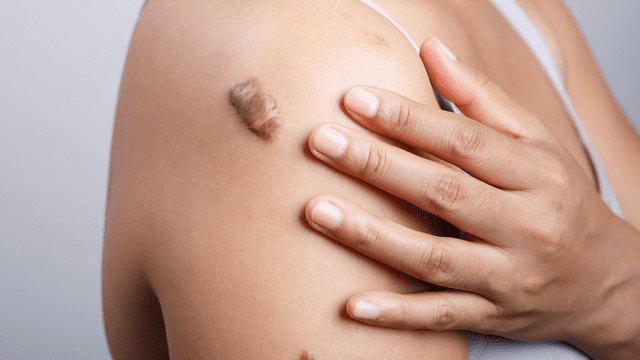What is a scar?
A scar is the permanent effect of damage to the deeper layer of the skin, the dermis. This layer is the ‘foundation’ of the skin and contains collagen and other fibres for strength. When these fibres are damaged, for example by a cut or burn, the skin cells make repairs but the fibres are never exactly the same as the original ones and a scar is formed. Ideally, the scar is very thin and has a surface level with its surroundings. However, sometimes too much scar forms and it becomes wide or raised. Effects on pigment cells and surface cells can also make scars dark, light, thin or thick and scaly.
Normal and abnormal scars
A scar is first seen once a wound has healed and any scabs or crusts have fallen off. It is normally pink and delicate and matures over 12 to 18 months. Sometimes too much scar is made and the scar grows. If a ridge or lump is formed the scar is said to be hypertrophic (overgrown). If the scar grows beyond its original edges as well then it is called a keloid scar.
Virtual Scar Consultations
£50
In-person Scar Consultations
£50


How can a scar be treated?
It is never possible to completely remove a scar so treatment aims to make scars as good as possible. Features of scars that can be improved include its angle, overactivity, keloid scarring, widening, bumps, dips or depressions, pinkness, pale or dark discolouration and itch.
Silicone ointment, steroid injections, laser, fillers and surgery can all be used to treat scars.
No two scars are the same and your surgeon will advise what treatment is best for your scar and its features.
